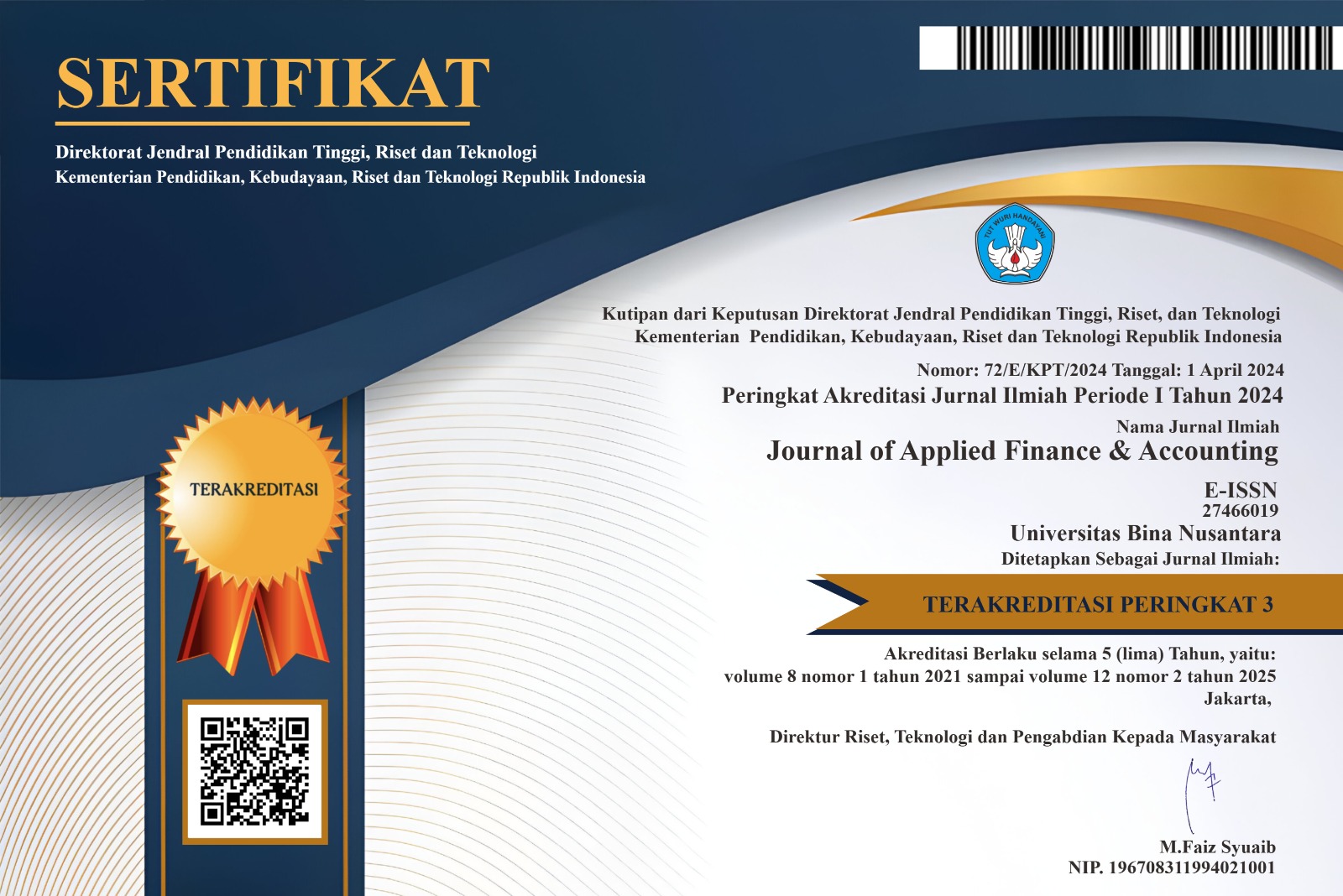The Relationship between Economic Value Added (EVA®) and Market Value Added (MVA) With Reported Earnings: An Empirical Research Of 40 Listed Companies In Indonesia Stock Exchange For The Year 2004-2007
DOI:
https://doi.org/10.21512/jafa.v1i1.116Keywords:
Relationship, economic value added (EVA), market value added (MVA), reported earnings, indonesia Stock Exchange.Abstract
This study was made to examine the relationship between Economic Value Added (EVA®) and Market Value Added (MVA) with the reported earnings. Thus, the purpose is to gain better understanding in the use of EVA and MVA in relation to the reported earnings in certain purposes from different regression models. With the sample of 40 Indonesian listed companies in Indonesia Stock Exchange from year 2004 to 2007, the hypothesis testing is used to find the relationships among variables. The author use formula for calculating EVA and MVA to be use in four models of regression analysis against reported earnings. This study found evidence in the relationships between EVA and MVA with reported earnings, and the highest correlation among the models is relationship within the same year period, which can be used for evaluation purposes. Only the relationship of the EVA in the previous year and reported earnings changes is proved not significant. Still, MVA is more significant in explaining its relationship with reported earnings rather than EVA. The author concludes that in general, Indonesian listed companies still produces negative EVA. On the other hand, while the EVA and MVA are proved to have correlation with reported earnings, the result for EVA is lower than MVA. Therefore, there is still not enough evidence that EVA can be used to explain the reported earnings effectively other than MVA.
Downloads
Published
Issue
Section
License
Authors who publish with this journal agree to the following terms:
Authors retain copyright and grant the journal right of first publication with the work simultaneously licensed under a Creative Commons Attribution License that allows others to share the work with an acknowledgement of the work's authorship and initial publication in this journal.
Authors are able to enter into separate, additional contractual arrangements for the non-exclusive distribution of the journal's published version of the work (e.g., post it to an institutional repository or publish it in a book), with an acknowledgement of its initial publication in this journal.
Authors are permitted and encouraged to post their work online (e.g., in institutional repositories or on their website) prior to and during the submission process, as it can lead to productive exchanges, as well as earlier and greater citation of published work (See The Effect of Open Access).




